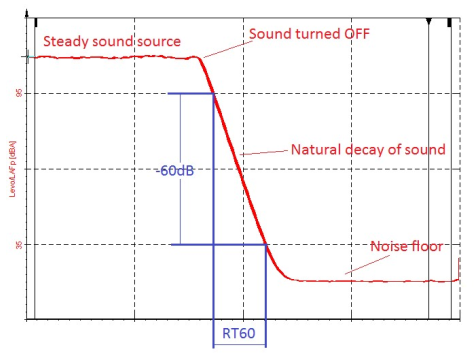This application note on Reverberation Time and Absorption Measurement was provided by our friends at DEWESoft
RT60 and alpha coefficient measurement
Introduction
Reverberation time rt60 is the time required for sound to decay 60 decibels from its initial level.
Firstly, rt60 is measured in narrow bands. Also, it differs depending on the frequency band being measured. Secondly, for precision, it is important to know what ranges of frequencies are being described by a reverberation time measurement.
Therefore, resonance effects are often used in studios to add depth to original sound. For that reason, changes are the perceived spectral structure of a sound. However, it does not alter the pitch.
Measurement Set up
Let’s say a customer is producing acoustic fillers for car interiors. Therefore, the rt60 time is measured with and without the test specimen mounted in the alpha chamber.
The customer is using a DEWE-43 with MSI-BR-ACC adapter and a microphone. The reverberation time is calculated with the RT60 plugin and the absorption coefficient is calculated with the Excel template.
They are performing the measurement in the alpha chamber, which is a room with steel walls that fully reflect the sound.
In the picture below, there is a test specimen in the test chamber, two loudspeakers, and sound reflectors to disperse the sound in all directions.
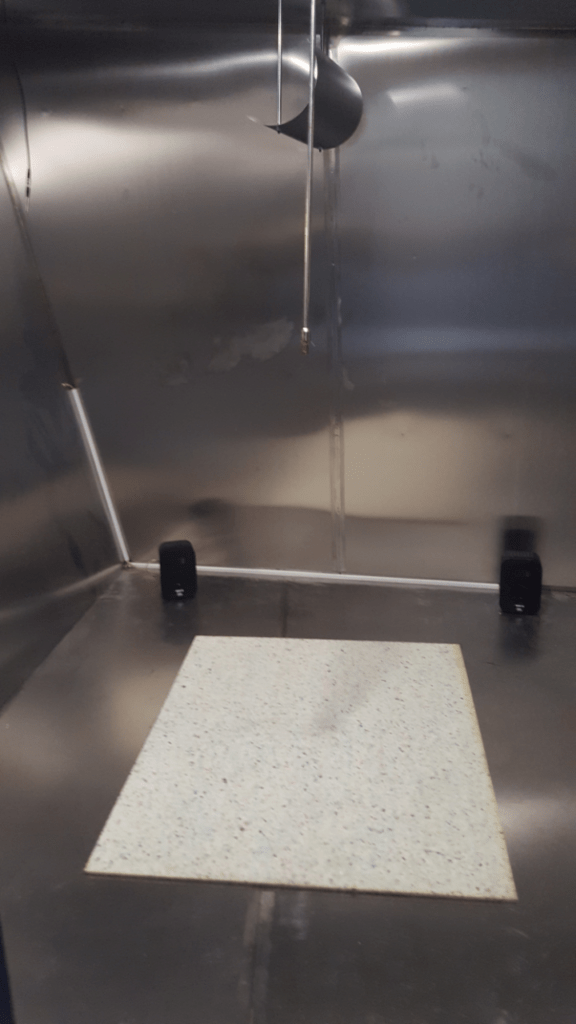
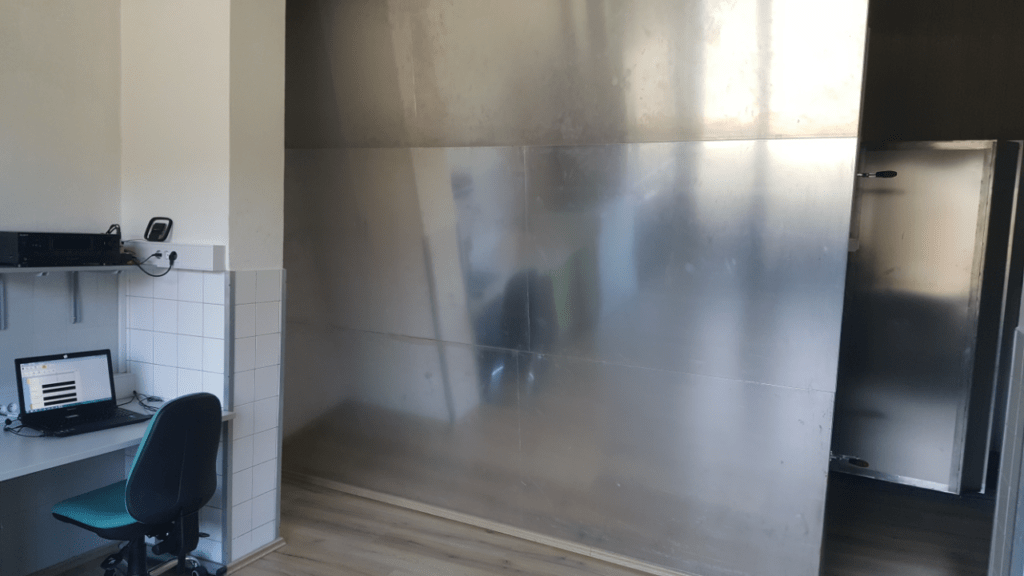
Reverberation Time Measurement
The customer wants to calculate the reverberation time from 250Hz to 10000Hz. However, this is because they cannot achieve a drop in the sound pressure level for more that 75dB. They are using the T20 evaluation range. In conclusion, for this evaluation range, only a 35 dB fall in each frequency band is required.
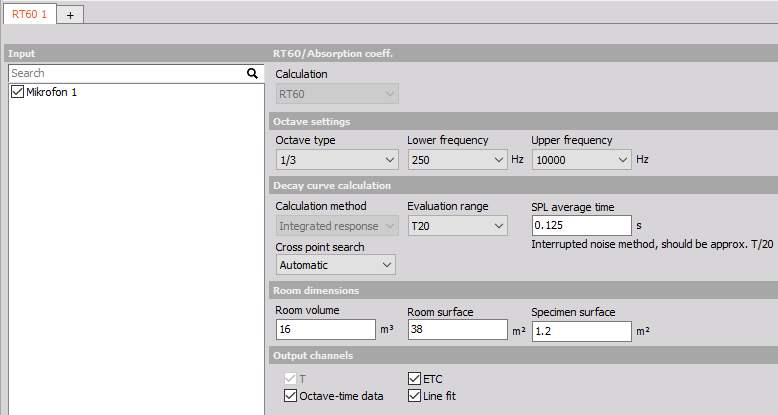
For the sound source, they are using a pink noise that is played on two loudspeakers placed inside the chamber.
However, in the picture below, we can see how the sound pressure level falls. The blue curve is the sound pressure level in Decibels and the orange curve is the sound pressure from the microphone in Pascals.
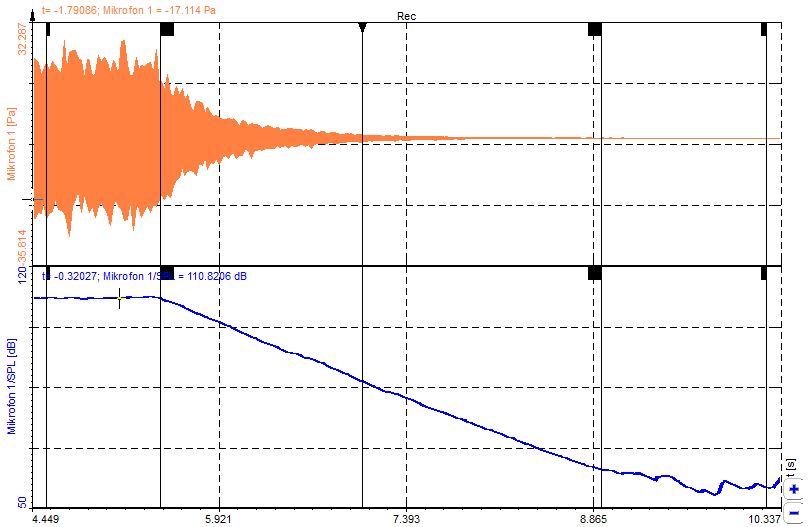
The first cursor is locked at the beginning of the SPL fall. And the second cursor is placed at the position where the SPL level already reaches noise floor level.
The first measurement is an empty room measurement. Therefore, where they acquire the rt60 time for an empty alpha chamber. The result is reverberation time T1 for each frequency band.
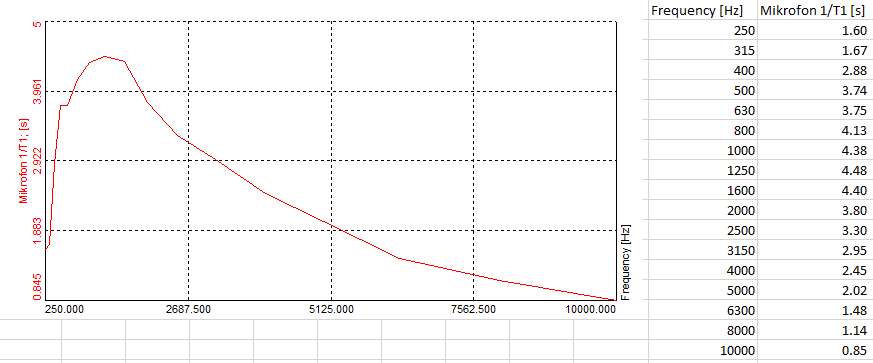
The second measurement is done with the test specimen inside the chamber. This test specimen is a foam that provides total absorption of sound in the doors of a car.
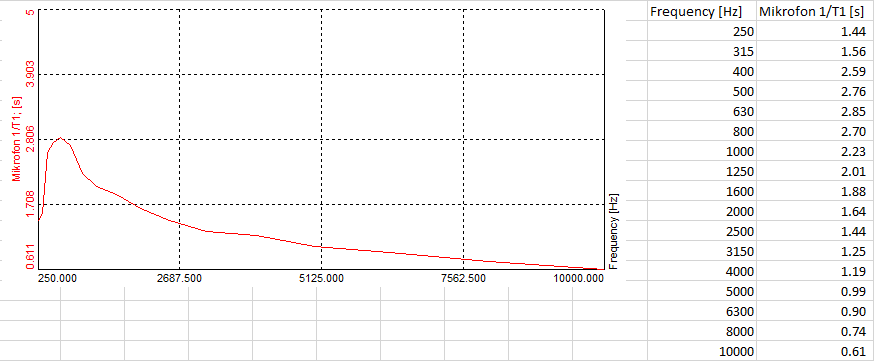
Alpha Coefficient Calculation
The Alpha Coefficient is a calculated using a formula. In which both rt60 times are important parameters.
For calculation of alpha coefficient, they use an Excel template that stores all the formulas.
First, they enter the parameters about the room conditions and dimensions. The important parameter is the surface area of a test specimen.
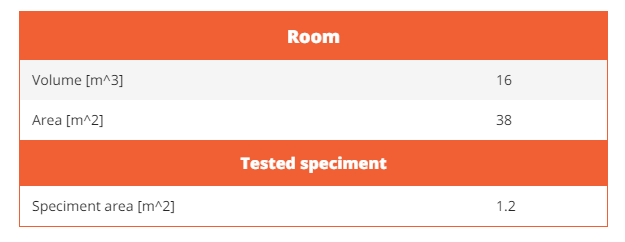
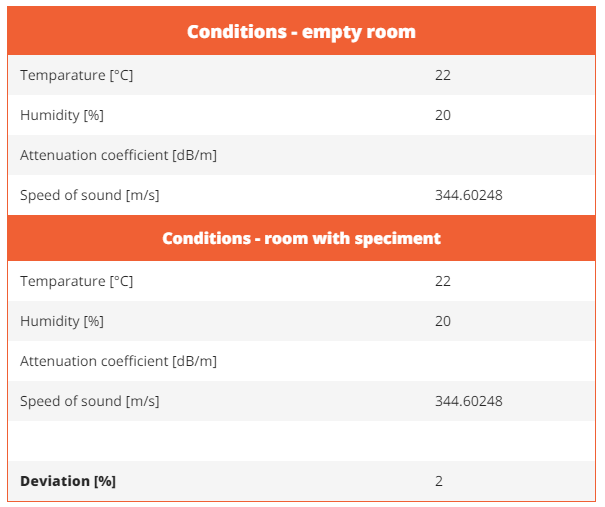
The data for reverberation time T1 (in an empty room) are copied into Excel template. The customer performs the measurement five times. The reverberation times are averaged in Excel.
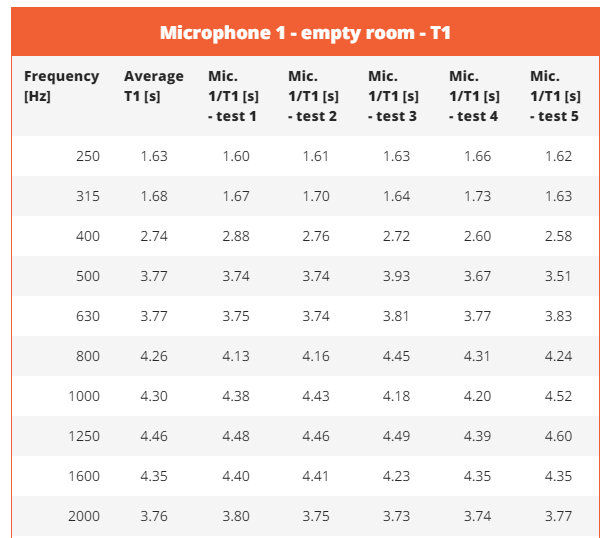
Testing of specimen is conducted five times. The frequency band data for reverberation time are averaged in the template.
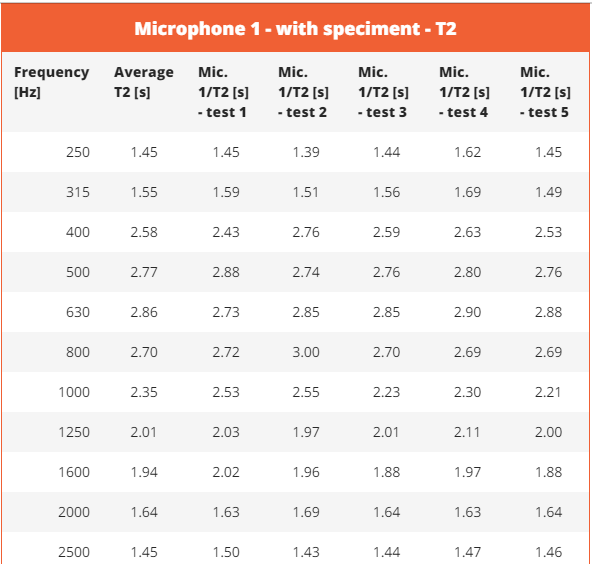
Report and Analysis
This section in the Excel is for reporting. Therefore, the Alpha Coefficient is calculated from reverberation times (T1, T2). Other parameters to be manually entered (e.g. surface area of a test specimen, speed of sound).
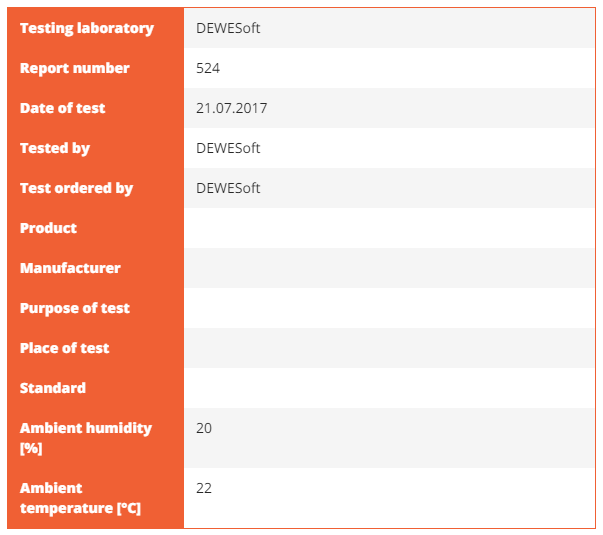
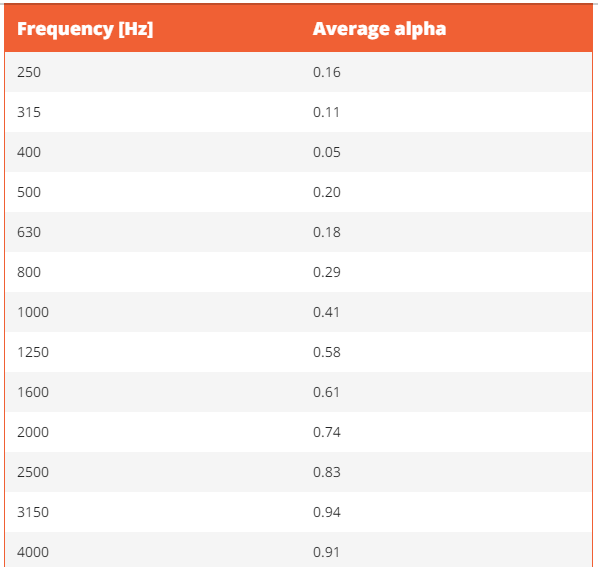
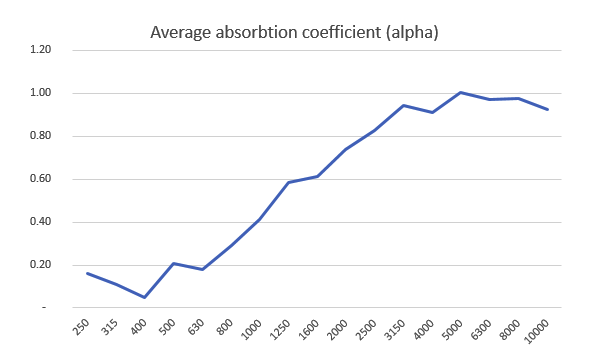
The customer is comparing the Alpha Coefficient in each frequency band with the required values from the car manufacturer.
Therefore, each absorbing material has its own alpha characteristics.
Would you like further information on this application? If so, contact us.
